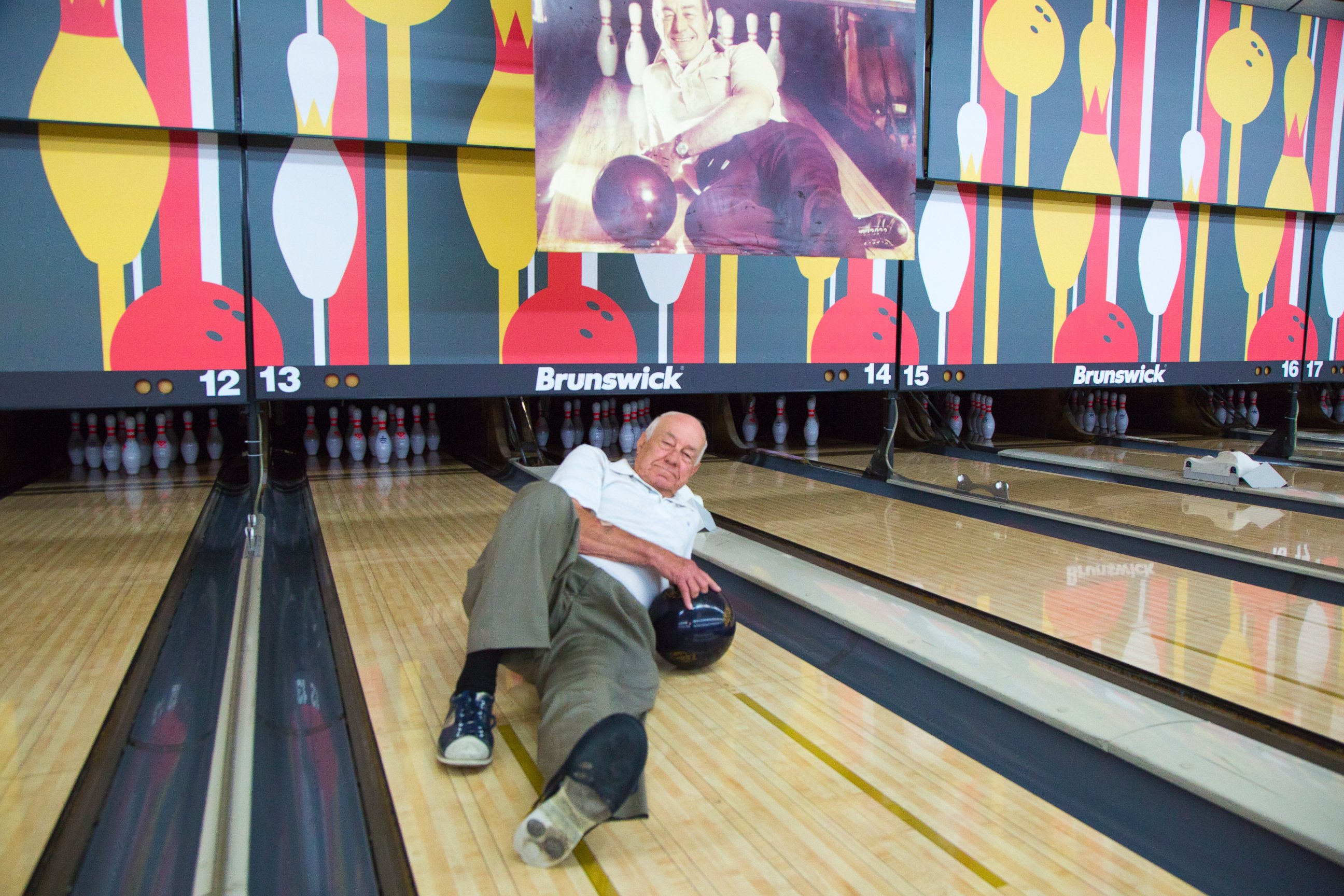Texas man bowls perfect 900, while 86-year-old still fights for recognition
In the bowling world, Glenn Allison is an all-time great.
— -- A 24-year-old Texas man bowled a 900 in Houston last week as an 86-year-old bowling legend fights for official recognition of perfect score he achieved in 1982.
Sean Osbourn, 24, became the 29th bowler to roll three consecutive 300 games for a 900 series in a United States Bowling Congress-certified competition, the league announced. He achieved the feat while filling in for someone in the late league of the Copperfield Bowl in Houston and said he still "can't believe" that he did it.
In the bowling world, Glenn Allison is an all-time great and a Hall of Famer. To everyone else, he is Mr. 900, the first person ever to bowl a perfect 900 in competition. The only problem? The governing body of professional bowling has repeatedly refused to recognize his accomplishment.
Allison, 86, still loves bowling. He competes in two leagues each week while working behind the counter five days a week at La Habra 300 Bowl in La Habra, California.

“I’ve been here for almost 20 years, and I love it,” said Allison. “I love the people, and I have a great time.”
He began bowling when he was 10 years old and fell in love with the sport immediately. He began taking odd jobs at the bowling alley just so he could surround himself with bowling.
“From the time I threw the first ball, I was in love with bowling, so I did it as much as I possibly could,” said Allison. “I put bottles away. I did janitorial work. Anything where they’d say, ‘Go ahead and bowl a couple games.’”
In 1956, when he was in his mid-20s, he moved to Chicago and became a professional bowler. By his second year, he started winning titles and made a living as a bowling instructor.
“Everybody that’s a serious bowler knows who Glenn Allison is,” said Jeff Richgels, who writes for the bowling blog 11th Frame. “He’s a great [Professional Bowlers Association] champion. He was one of the very best bowlers in the world in his era. He’s in the USBC Hall of Fame. He’s at the upper echelon of one of the all-time greats.”
Allison retired from bowling in 1970 and was inducted into the American Bowling Congress Hall of Fame in 1979. In 1982 he joined the senior tour. That’s when everything changed.
July 1, 1982, began as a normal evening for Allison, who was working at his brother’s liquor store at the time. He left the liquor store at 5 o’clock and headed down to his favorite bowling spot, La Habra 300 Bowl, for league night.

“I bowled the early league with my brother and my nephew, and I was trying out a new bowling ball,” said Allison. “Then I moved to a different pair of lanes, 13 and 14, and proceeded to start striking when I got over. After about seven or eight frames, I thought I might bowl a 300 game.”
Allison bowled a 300 and then proceeded to bowl another 300 in his second game.
“After the first game I strolled into the lounge and had myself a shot of Crown Royal, and said that I’ll sip on this for a while,” said Allison. "And I sipped on it all the way through the second game while I proceeded to throw 12 more strikes.”
Dennis Curley was Allison’s teammate that night. While Allison operated in a calm and cool manner in the face of bowling immortality, everyone else that night was on the edge of their seats, Curley recalled.
“Every time he’d get up to bowl, everyone would stop bowling and gather, get as close as they could to watch him throw the next bowl,” said Curley. “People who were in the league that night were calling friends to come down to maybe witness a historic event. And so it was nerve wracking. It really was.”
After the second game, Allison got himself another Crown Royal and sipped on that throughout the third game, bowling strike after strike after strike.
“I never in my life dreamed of bowling a 900,” he said. “My dreams were an 887. The existing record at the time was 886. So when I got up to bowl in the 10th frame of the third game, I needed that first strike to break that record. If there was any pressure on me that night, that was the pressure. The last two strikes I got to finish off the 900 were almost like an afterthought. I’d already done what I had dreamed to do. The 900 just happened after that.”
With that final strike, history was made. It was one of the greatest accomplishments in bowling and sports. What many deemed impossible became reality. The euphoria of that moment would not last long, though. The next morning a representative from the American Bowling Congress flew to La Habra to test the lane where Allison bowled the night before. After the test, Allison’s record no longer stood.
“They stated that there was too much oil in the center of the lane, which made an easy lane to the 1-3 pocket, which you could strike easy,” said Allison. “As far as I was concerned, it was a normal bowling shot. The average bowler that night was under average.”

“There was certainly a letdown. It was such a subjective test,” said Curley. “You had the first league that bowls, and you have four bowlers on a team, bowling three games. The oil tends to be distributed differently every time someone throws the ball. It picks up a little bit of the oil and and moves it to a different part of the lane. So obviously, the center of the lane, where you’re throwing the ball to get a strike, gets far more traffic, so it’s going to have far less oil. So we were surprised and disappointed when they turned the sanction down.”
The first official 900 series came 15 years after Allison’s accomplishment, and there have been over 25 of them since, as the lane rules Allison was subjected to no longer exist. But many still think of Allison’s triumph as the first 900, and his supporters started a petition to have the United States Bowling Congress finally recognize Allison’s accomplishment.
“They opened it up again, and they said they relooked at it,” said Allison. “They said at that time that the 900 would never be sanctioned and that the case was closed.”
“The thing that drives most people about this is they know Glenn’s achievement was greater than any of the 900s since,” said Richgels. “So why not go back and give it some sort of recognition with an asterisk or something in the record books? It’s not Pete Rose. Glenn did nothing wrong. He didn’t oil the lanes. He bowled. He threw 36 strikes — amazing achievement.”
The USBC declined to comment when contacted by ABC News.
Allison has accepted the USBC’s decision but does not agree with it.
“I would very much love to see it sanctioned,” he said. “I don’t believe it will ever happen in my lifetime. I would be satisfied if it were to be put in the record books with an asterisk. I think it deserves that. Other than that, I’m happy.”




